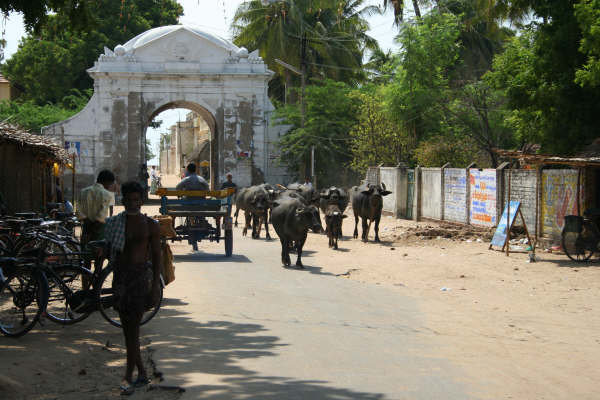Nationalmuseets Tranquebar Initiativ

Forskningsfaglig leder, lektor, dr.phil. Esther Fihl, Institut for Tværkulturelle og Regionale Studier, Københavns Universitet
- Tranquebar Initiativet rummer omtrent 20 delprojekter
I året 1845 besøgte korvetten Galathea den danske koloni Tranquebar, hvor skibets kaptajn Steen Bille ved en officiel højtidelighed strøg Dannebrog fra flagmasten af Dansborg. Det skete i forbindelse med overdragelsen til England af de danske besiddelser i Indien. I forbindelse med besøget blev der ligeledes foretaget rejser ind i land rundt på det tidligere danske koloniterritorium, hvor der bl.a. blev gjort etnografiske registreringer og indsamlinger til Nationalmuseet.
Projektets forskningsfaglige leder, antropologen Esther Fihl sejler med Vædderen fra Accra i Ghana til Cape Town i Sydafrika, hvor hun undervejs vil beskæftige sig med et par af de allertidligste danske Ostindiensrejser syd om Afrika og i øvrigt formidle om det store Tranquebar Initiativ. Initiativets delprojekter er på Galathea3 tildelt en landbaseret platform, da skibet på grund af omlægningen af sejlruten nu ikke kommer til at lægge til ud for Tranquebar. Det overordnede formål med, at også Galathea3 ekspeditionen i 2006 inddrager Tranquebar, er mangesidigt. Dels kan Galathea styrke formidlingen af de igangværende dansk-indiske bestræbelser på at udforske den fælles kulturarv, de koloniale dansk-indiske kulturmøder samt restaureringen af bygningsværker fra danskertiden (1620-1845). Dels kan Galathea være med til at igangsætte og udføre nye tværdisciplinære undersøgelser i relation til de igangværende samfundsmæssige og kulturelle transformationsprocesser, som det moderne Tranquebar i disse år undergår inden for næsten alle sektorer.
Nationalmuseets Tranquebar Initiativ er tværdisciplinært og tilrettelagt i samarbejde med en række indiske myndigheder og indiske og danske forskningsinstitutioner. Initiativet rummer dels rene forskningsprojekter og dels forskningsbaserede projekter med henblik på restaureringer af bygninger fra kolonitiden, indsamling af etnografiske genstande til belysning af dagliglivet i nutiden samt endelig historiske og etnografiske udstillingsaktiviteter i både Danmark og Indien. Initiativet har tillige et uddannelsesaspekt, eftersom det søger at inddrage specialestuderende og praktikanter fra forskellige indiske og danske universiteter. Også forskerrekruttering er indtænkt ved formuleringen af en række relevante ph.d-projekter.
Læs mere om Nationalmuseets projekter på Galathea 3 her!

Foto: Ingrid Fihl Simonsen, aug. 2005